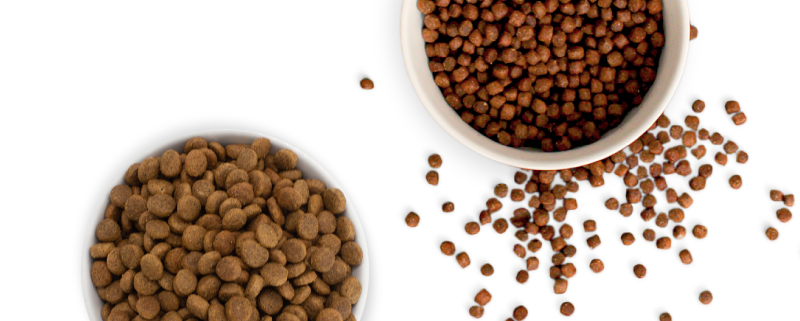Some pups act like they haven’t eaten in days—even if their bowl was licked clean ten minutes ago. If this sounds familiar, you’re not alone. A big appetite can be totally normal, but when your dog is constantly begging for food, it might be time to take a closer look.
Let’s dig into the science and behaviour behind those hungry eyes—and how to help your pup feel full, focused, and balanced.
Is It Real Hunger—or Just a Habit?
Dogs are smart. If begging worked once, chances are they’ll try it again. Over time, this can turn into a pattern—especially if it earns them treats, attention, or scraps from your plate.
But that doesn’t mean you should ignore the behaviour. Sometimes, a seemingly bottomless appetite is your pup’s way of telling you something’s off. The trick is figuring out whether they’re truly hungry… or just acting like it.
5 Common Reasons Your Dog Might Seem Hungry All the Time
1. Their food isn’t keeping them full
Not all meals are created equal. Diets low in protein or fibre can leave your dog feeling unsatisfied, even if they’re eating enough in terms of volume.
That’s why our recipes at Omni are packed with high-quality plant protein and gut-friendly fibre—for slow-release energy and long-lasting fullness.
2. They’re super active
Dogs who burn through energy on walks, runs, or play sessions may simply need more fuel. If your pup is bursting with energy but always hungry, they might benefit from a portion adjustment. We’ve got feeding guidelines to help—or you can speak directly to one of our vets for tailored advice.
3. Life stage matters
Puppies, adolescents, and older dogs all have different nutritional needs. A growing pup might genuinely need more food, while hormonal or metabolic shifts in senior dogs could increase appetite, even if activity levels are lower.
4. Health issues could be at play
A sudden increase in hunger can signal medical concerns like diabetes, parasites, thyroid imbalances, or side effects from medication. If your dog’s behaviour has changed and you’re noticing other symptoms like weight changes, pacing, or restlessness—don’t wait. Check in with your vet.
5. Stress and emotional eating
Yep, dogs can comfort-eat too. Big life changes, noise sensitivity, or new additions to the home can all trigger anxious food-seeking behaviours. If mealtimes feel frantic, your dog might be using food to self-soothe.
6. They’re a Labrador
While this might sound silly to begin with, scientists have discovered that Labradors have a gene that doesn’t allow them to feel full, which is shared with some humans. This can lead to over-eating if not kept in check and could mean your Labrador friend puts on some extra pounds eventually if their food intake isn’t monitored. Replacing their normal food with low fat, high protein alternatives can help maintain a healthy weight for your companion.
Tips to Help a Hungry Pup Feel Truly Satisfied
✔️ Feed balanced, protein-rich meals
Start with the basics. Your dog’s food should be complete, vet-approved, and designed to support energy and satiety. Omni’s high-protein, high-fibre meals are formulated to help your dog feel genuinely full—not just temporarily satisfied.
✔️ Stick to a predictable routine
Dogs thrive on structure. Consistent feeding times can regulate hunger hormones and reduce the chances of attention-seeking between meals.
✔️ Make mealtimes last longer
Slow feeder bowls or food puzzles don’t just reduce gulping—they turn dinner into a mentally enriching experience. Bonus: they can help your pup feel fuller, faster.
✔️ Set clear boundaries
We know it’s hard to say no to those eyes—but reinforcing begging outside mealtimes just teaches your dog that persistence pays off. Stick to your schedule, and stay strong!
When to Call the Vet
Still unsure what’s behind your dog’s insatiable appetite? You’re not overreacting. Whether it’s nutritional, behavioural, or medical, our Omni Vets are here to help. No judgment—just science-backed advice and support that’s tailored to your pup.
Food That Does More Than Fill the Bowl
Your dog’s meals should do more than stop their stomach from rumbling. At Omni, we’ve designed food that fuels, nourishes, and supports your dog’s whole wellbeing—body and mind.
With complete, plant-powered nutrition and carefully selected ingredients, our recipes help your pup feel satisfied, balanced, and ready for anything.
👉 Explore our meals and find the perfect fit for your dog’s appetite, energy levels, and lifestyle.
Is your dog already an Omni fan? Tell us all about it—we love hearing your stories!







